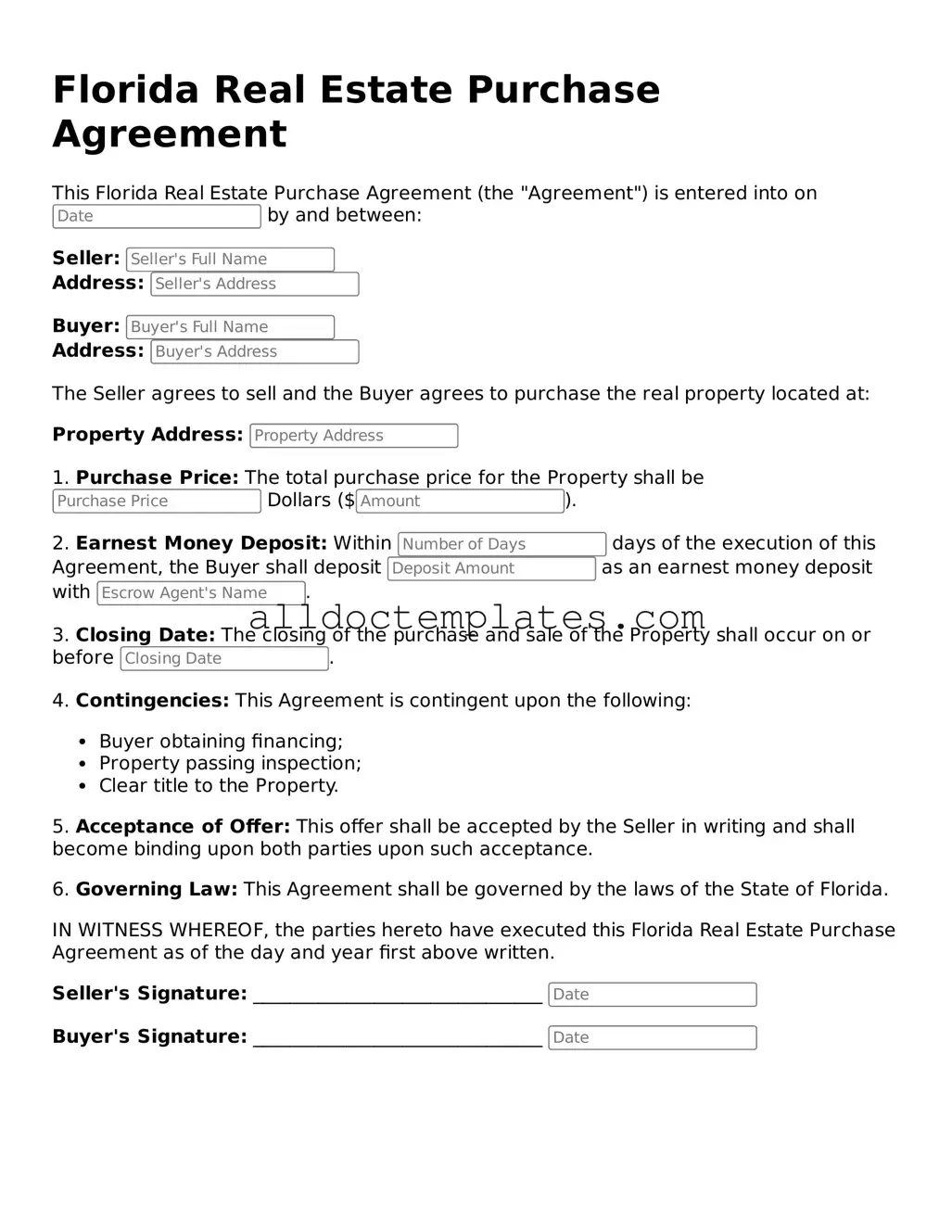Free Real Estate Purchase Agreement Document for Florida State
The Florida Real Estate Purchase Agreement is a legally binding document that outlines the terms and conditions of a real estate transaction in Florida. This form serves as a crucial tool for buyers and sellers, ensuring that both parties understand their rights and responsibilities. By clearly detailing the specifics of the sale, the agreement helps facilitate a smooth transfer of property ownership.
Get Your Form Now
